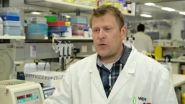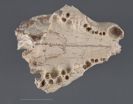(Press-News.org) Washington, DC (May 8, 2014) — More frequent face-to-face physician visits in the month following hospital discharge may help reduce a kidney failure patient's chances of needing to be sent back to the hospital. That's the conclusion of a study appearing in an upcoming issue of the Journal of the American Society of Nephrology (JASN). The study also found that closer outpatient monitoring of kidney failure patients following hospital discharge could cut health care costs significantly.
A major goal of health policy reform has been to reduce hospital readmissions within a month after patients are discharged. Individuals with kidney failure represent one group of patients at increased risk of being readmitted.
Kevin Erickson, MD (Stanford University) and his colleagues looked to see if more outpatient physician visits to patients might cut down on readmissions among kidney failure patients.
Among the major findings:
In 26,613 patients who were on dialysis between 2004 and 2009, one additional provider visit in the month following hospital discharge was estimated to reduce the probability of 30-day hospital readmission by 3.5%.
The reduction in 30-day hospital readmission ranged from 0.5% to 4.9% in an additional four groups of patients tested, depending on population density around facilities, facility profit status, and patient Medicaid eligibility.
At current Medicare reimbursement rates, the effort to see patients one additional time in the month following hospital discharge could lead to 31,370 fewer hospitalizations per year, and $240 million per year saved.
"This research is important by highlighting the role that outpatient nephrology providers have in preventing hospital readmissions for patients receiving hemodialysis," said Dr. Erickson.
In an accompanying editorial, Raymond Hakim, MD (Vanderbilt University) and Allan Collins, MD, FACP (University of Minnesota, Minneapolis) noted that the study's findings should be considered in any plan to reduce rehospitalizations in the dialysis population. They also noted several other interventions and services by the health care team that can lead to reduced rehospitalization. "Reducing the high rates of rehospitalization in [kidney failure] patients is clearly in the best interests of patients and in the financial interests of dialysis facilities providing maintenance dialysis services, as well as the hospitals to which patients are occasionally admitted to receive acute services," they wrote.
INFORMATION:
Highlights
Among kidney failure patients on dialysis who were treated in the hospital, one additional doctor visit in the month following hospital discharge was estimated to reduce the probability of 30-day hospital readmission by 3.5%.
Seeing kidney failure patients one additional time in the month following discharge could save $240 million in health care costs each year.
Nearly 400,000 people in the United States are on dialysis.
Study co-authors include Jay Bhattacharya, MD, PhD, Wolfgang Winkelmayer, MD, ScD, and Glenn Chertow, MD, MPH.
Disclosures: The authors reported no financial disclosures.
The article, entitled "Physician Visits and 30-Day Hospital Readmissions in Patients Receiving Hemodialysis," will appear online at http://jasn.asnjournals.org/ on May 8, 2014.
The editorial, entitled "Reducing Avoidable Rehospitalization in ESRD: A Shared Accountability," will appear online at http://jasn.asnjournals.org/ on May 8, 2014.
The content of this article does not reflect the views or opinions of The American Society of Nephrology (ASN). Responsibility for the information and views expressed therein lies entirely with the author(s). ASN does not offer medical advice. All content in ASN publications is for informational purposes only, and is not intended to cover all possible uses, directions, precautions, drug interactions, or adverse effects. This content should not be used during a medical emergency or for the diagnosis or treatment of any medical condition. Please consult your doctor or other qualified health care provider if you have any questions about a medical condition, or before taking any drug, changing your diet or commencing or discontinuing any course of treatment. Do not ignore or delay obtaining professional medical advice because of information accessed through ASN. Call 911 or your doctor for all medical emergencies.
Founded in 1966, and with more than 14,000 members, the American Society of Nephrology (ASN) leads the fight against kidney disease by educating health professionals, sharing new knowledge, advancing research, and advocating the highest quality care for patients.
An extra doctor visit may help prevent rehospitalization of kidney failure patients
2014-05-09
ELSE PRESS RELEASES FROM THIS DATE:
Neurovance's EB-1020 SR for adult ADHD shows stimulant-like efficacy in Phase 2a trial
2014-05-09
Neurovance, Inc. today announced complete results from its phase 2a pilot study of EB-1020 SR, a non-stimulant, in adult male patients with all subtypes of ADHD (attention deficit hyperactivity disorder). EB-1020 SR is a norepinephrine- and dopamine-preferring triple reuptake inhibitor. The data showed a statistically significant improvement in ADHD symptoms on the ADHD-Rating Scale-IV (ADHD-RS-IV), the primary outcome measure, in a range similar to that reported in previously published trials with stimulants. EB-1020 SR appears to be well tolerated at the doses studied. ...
Ending the perfect storm: Protein key to beating flu pandemics
2014-05-09
VIDEO:
A protein called SOCS4 has been shown to act as a handbrake on the immune system's runaway reaction to flu infection, providing a possible means of minimising the impact of...
Click here for more information.
A protein called SOCS4 has been shown to act as a handbrake on the immune system's runaway reaction to flu infection, providing a possible means of minimising the impact of flu pandemics.
Scientists from Melbourne's Walter and Eliza Hall Institute have found that ...
Lethal parasite evolved from pond scum
2014-05-09
A genomic investigation by University of British Columbia researchers has revealed that a lethal parasite infecting a wide range of insects actually originated from pond scum, but has completely shed its green past on its evolutionary journey.
A team led by UBC Botany Prof. Patrick Keeling sequenced the genome of Helicosporidium – an intracellular parasite that can kill juvenile blackflies, caterpillars, beetles and mosquitoes – and found it evolved from algae like another notorious pathogen: malaria.
Keeling and colleagues had previously reported that malaria shared ...
Eating more fruits, vegetables may cut stroke risk worldwide
2014-05-08
Eating more fruits and vegetables may reduce the risk of stroke worldwide, according to new research in the American Heart Association's journal Stroke.
Researchers conducted a meta-analysis of 20 studies published over the last 19 years to assess the effects of fruit and vegetable consumption on risk of stroke globally. The combined studies involved 760,629 men and women who had 16,981 strokes.
Stroke risk decreased by 32 percent with every 200 grams of fruit consumed each day and 11 percent with every 200 grams of vegetables consumed each day.
"Improving diet and lifestyle ...
Common test used on heart patients who need defibrillator implants unnecessary: Study
2014-05-08
Hamilton, ON (May 8, 2014) – New research from McMaster University suggests that a commonly performed test during certain types of heart surgery is not helpful and possibly harmful.
The testing procedure, known as defibrillator testing (DT), is commonly used on people who require implantable cardioverter-defibrillators (ICDs) to prevent sudden cardiac death. It involves putting the patient into cardiac arrest to determine if the defibrillator can first recognize, then successfully shock the patient back into a normal heart rhythm. It requires the use of general anesthesia ...
Study confirms mitochondrial deficits in children with autism
2014-05-08
(SACRAMENTO, Calif.) — Children with autism experience deficits in a type of immune cell that protects the body from infection. Called granulocytes, the cells exhibit one-third the capacity to fight infection and protect the body from invasion compared with the same cells in children who are developing normally.
The cells, which circulate in the bloodstream, are less able to deliver crucial infection-fighting oxidative responses to combat invading pathogens because of dysfunction in their tiny energy-generating organelles, the mitochondria.
The study is published ...
Mid-level solar flare erupts from the sun
2014-05-08
The sun emitted a mid-level solar flare, peaking at 6:07 a.m. EDT on May 8, 2014, and NASA's Solar Dynamics Observatory, or SDO, captured images of it. Solar flares are powerful bursts of radiation. Harmful radiation from a flare cannot pass through Earth's atmosphere to physically affect humans on the ground, however -- when intense enough -- they can disturb the atmosphere in the layer where GPS and communications signals travel.
To see how this event may impact Earth, please visit NOAA's Space Weather Prediction Center at http://spaceweather.gov, the U.S. government's ...
JCI online ahead of print table of contents for May 8, 2014
2014-05-08
Leptin-dependent regulation of reproduction
Individuals that lack the adipose-derived hormone leptin fail to complete puberty and are infertile. Leptin-deficient mice recapitulate human phenotypes; however, it is not clear how leptin and leptin signaling impact the reproductive axis. In this issue of the Journal of Clinical Investigation, Vincent Prevot and colleagues at INSERM U837 evaluated leptin deficient animals and determined that leptin acts directly on neurons in the preoptic region of the hypothalamus that synthesize nitric oxide to regulate peripheral levels ...
Regenerating plastic grows back after damage
2014-05-08
CHAMPAIGN, Ill. — Looking at a smooth sheet of plastic in one University of Illinois laboratory, no one would guess that an impact had recently blasted a hole through it.
Illinois researchers have developed materials that not only heal, but regenerate. Until now, self-repairing materials could only bond tiny microscopic cracks. The new regenerating materials fill in large cracks and holes by regrowing material.
Led by professor Scott White, the research team comprises professors Jeffry S. Moore and Nancy Sottos and graduate students Brett Krull, Windy Santa Cruz and ...
Extinct kitten-sized hunter discovered
2014-05-08
A Case Western Reserve University student and his mentor have discovered an ancient kitten-sized predator that lived in Bolivia about 13 million years ago—one of the smallest species reported in the extinct order Sparassodonta.
Third-year undergraduate student Russell Engelman and Case Western Reserve anatomy professor Darin Croft made the finding by analyzing a partial skull that had been in a University of Florida collection more than three decades.
The researchers report their finding in the Journal of Vertebrate Paleontology online at: http://www.tandfonline.com/doi/full/10.1080/02724634.2013.827118#.U2p8-S8njhM.
"The ...




